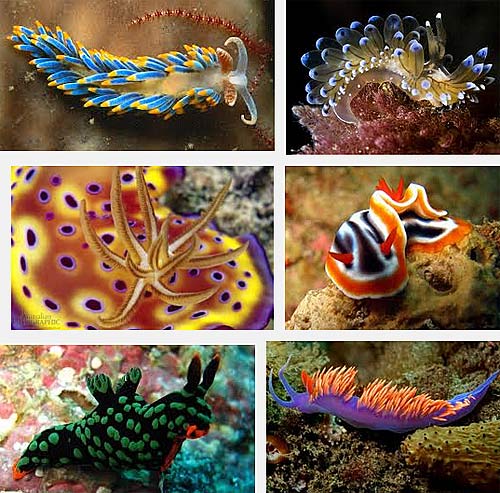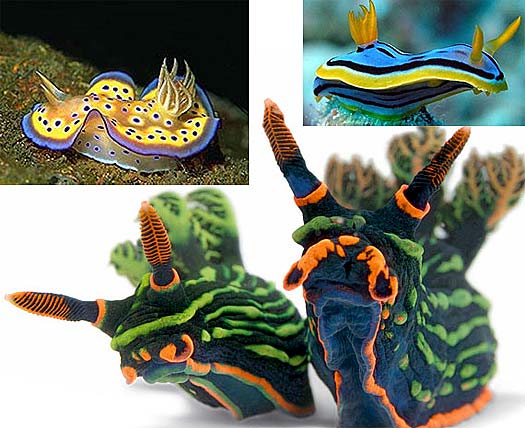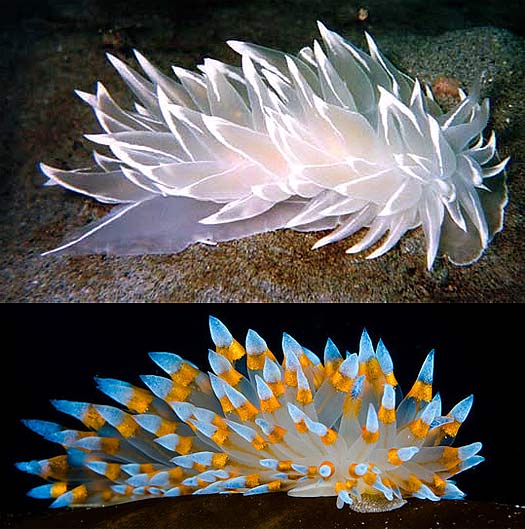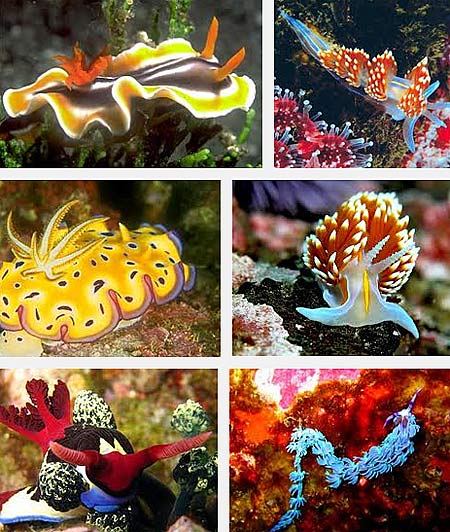Nudibranch – Amazing Color and Defense Strategies

A native to benthic depths of seas everywhere from Antarctica to the Tropics, the nudibranch is a creature whose peculiar name often conjures images of some sort of tree dwelling monkey. However, the nudibranch is obviously something you won’t find scaling bark anytime soon. It’s more often called a “sea slug” because of its appearance. However, the name “sea slug” is also applied to many other unrelated species. The nudibranch is a type of mollusk known for shedding its shell after the larval stage. With over three thousand confirmed species, it is a creature unto its own. Reaching lengths up to 24 inches, it has cephalic tentacles that it uses for touch, taste and smell, and is far more capable of seeing light than dark. None of that has anything to do with its name though, as it gets that from its system of naked and branch formed gills that cover its back and allow it to breath.

Perhaps the most interesting thing about the nudibranch is its array of defense mechanisms. Primarily, the creature survives through its coloration, by blending into its surroundings and/or presenting a skin that looks unappetizing to predators. If a predator decides to attack anyway, things get real interesting, as nudibranches can releases acids and toxins from their skin (depending in the exact species) that can stun or at least deter their would-be eaters. Even more amazing, is their ability to ingest hydrozoids and process their stinging cells back into their own skin for defense. That’s the equivalent of someone eating knives then using them to grow wolverine claws!

Different species of nudibranch feed on different prey, ingesting everything from sponges to hydrozoids, to jellyfish, and using the biproducts to aid in their defense mechanisms. Due to their sheer numbers and mass distribution, the nudibranch is in no danger of extinction and won’t be anytime soon.

